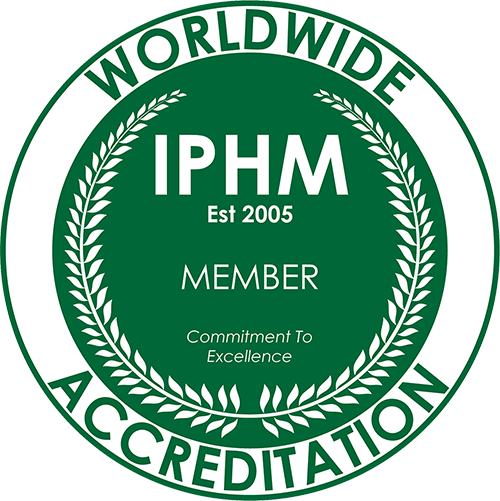Why and How to Do Integration After a Breathwork Session
Breathwork is a powerful tool for emotional healing, self-discovery, and transformation. Through intentional breathing techniques, individuals can access deep states of awareness, release stored tension, and process unresolved emotions. However, the work doesn't end once the breathwork session is over. In fact, the real power of breathwork comes in the integration process—where the insights, emotions, and energy shifts experienced during the session are brought into daily life. Without proper integration, the insights gained may remain fleeting, and the healing process may not be fully realized.
In this blog, we’ll explore why integration after a breathwork session is essential and provide guidance on how to best approach this powerful process for lasting transformation.
Why Integration After Breathwork Matters
- Anchoring the Emotional Shifts: During a breathwork session, you may experience significant
emotional releases, from tears of grief to feelings of joy or liberation. These emotional shifts can be fleeting if not processed or integrated properly. Integration allows you to anchor these changes and ensure that the emotional healing continues after the session. It helps you to
understand and
embrace the emotions that came up, creating lasting shifts in your emotional state.
- Embodying New Insights: Breathwork often brings
new insights or
epiphanies about yourself, your relationships, or your life path. These realizations can be life-changing, but they require conscious integration to be fully realized. By taking the time to reflect and embody these insights, you begin to live in alignment with your newfound clarity. Without integration, the insights may fade and feel disconnected from your everyday life.
- Releasing Trauma and Stored Energy: Breathwork can be particularly effective for
trauma release, as it helps to process emotional or physical experiences that may have been held in the body. When trauma is released, the body may feel lighter, but there could also be a need to
reconnect and
rebuild a sense of safety and stability. Integration ensures that the body and mind have time to process and stabilize after the release of trauma.
- Preventing Overwhelm: For many, breathwork sessions can be intense—emotionally, mentally, and physically. The experience can bring up past pain, unresolved emotions, or deep spiritual realizations. Without a proper
integration process, these experiences may leave you feeling overwhelmed or disoriented. Integration offers a grounded approach to help you
reorient and
stabilize yourself in the aftermath of the session.

How to Best Integrate After a Breathwork Session
The integration process is as essential as the breathwork itself. It allows you to anchor the shifts you’ve experienced, process emotions, and sustain the benefits of the session in your everyday life. Below are key strategies for doing this effectively:
1. Journaling: Write Down Your Experience
One of the most powerful ways to integrate breathwork is through journaling. After the session, take time to write down everything you experienced. This includes any emotions, insights, sensations, or images that arose during the session. Journaling can help you process and clarify what occurred, enabling you to fully understand and integrate the experience.
Ask yourself reflective questions such as:
- What emotions did I experience during the session?
- What insights or realizations did I have?
- Did any memories or past events come up?
- How do I feel in my body after the session?
Writing helps you anchor and solidify the experience, ensuring that it’s not forgotten or lost.
2. Practice Mindful Awareness
Breathwork often creates a heightened sense of awareness and presence. To fully integrate the insights gained, it’s essential to practice mindful awareness in your daily life. This involves being present in the moment, observing your thoughts, emotions, and physical sensations without judgment.
Engage in daily mindfulness practices, such as:
- Mindful breathing: Take a few minutes each day to connect with your breath and check in with your body.
- Body scans: Scan your body from head to toe to identify any areas of tension or energy. Gently release any discomfort through conscious breathing.
- Mindful listening: In conversations or everyday activities, focus on being fully present without distraction.
Mindfulness keeps you grounded in the wisdom gained during the breathwork session, helping to integrate those insights into your daily behavior and thought patterns.
3. Embodied Practices: Yoga, Movement, and Stretching
Since breathwork is highly somatic, it’s important to continue connecting with your body after the session. Yoga, movement, or stretching are excellent practices for grounding yourself and releasing any residual tension or energy that may have been stirred up during the session. These activities help you process and anchor the energy released during breathwork.
- Gentle, restorative yoga or stretching can help release physical tension stored in the body.
- Movement, like walking or dancing, helps integrate the energy and keep the body fluid and open.
Engaging in embodied practices helps ensure that the emotional and physical releases from breathwork are processed fully and grounded in your body.
4. Seek Support and Connection
Breathwork can often bring up deep emotions or past trauma. It’s important to reach out for support if needed. Having a trusted guide, therapist, or group can help you process the emotions or insights that arise and offer supportive guidance through your integration.
- Therapists or coaches can help you navigate difficult emotions or trauma that may have surfaced.
- Breathwork integration circles or support groups provide a community of people who can relate to your experience and share their own integration journeys.
- One-on-one coaching or integration sessions with a breathwork facilitator can help you gain clarity on your experience and create actionable steps for moving forward.
Connecting with others who understand the process can help you feel validated and supported as you move through your integration.
5. Take Time for Self-Care
After an intense breathwork session, your body and nervous system may need time to recover. Practice gentle self-care by resting, nourishing your body, and engaging in activities that promote relaxation and rejuvenation.
- Sleep is essential to allow the body to fully process and integrate the experience.
- Hydration and nourishing foods help to support the body’s healing process.
- Engage in relaxation practices like baths, journaling, or spending time in nature to calm the nervous system.
Taking care of your body ensures that you feel safe and stable after the intense emotional and physical releases of breathwork.
6. Set New Intentions
Breathwork can uncover new desires, goals, or visions for your life. It’s important to set clear intentions on how you want to integrate those insights into your day-to-day activities. Consider how the changes you’ve experienced will inform your relationships, career, and personal growth.
- Write down specific, actionable goals that reflect the shifts you’d like to see in your life. This could include setting boundaries, creating new habits, or stepping into new opportunities.
- Check in with yourself regularly to see if you’re living in alignment with your insights. Adjust as necessary to stay grounded in the healing process.
Final Thoughts
Integration after breathwork is essential for turning emotional releases and insights into lasting transformation. It’s a process of reflection, grounding, and action, helping to bring the shifts from your session into your everyday life. By practicing mindfulness, journaling, seeking support, and engaging in self-care, you can ensure that the wisdom and healing from your breathwork session stay with you, helping you create lasting positive change.
Remember, integration is a journey in itself—one that may take time, patience, and compassion. Trust that with consistent practice and attention, the breakthroughs from your breathwork session will continue to unfold, bringing deeper healing and personal growth.





